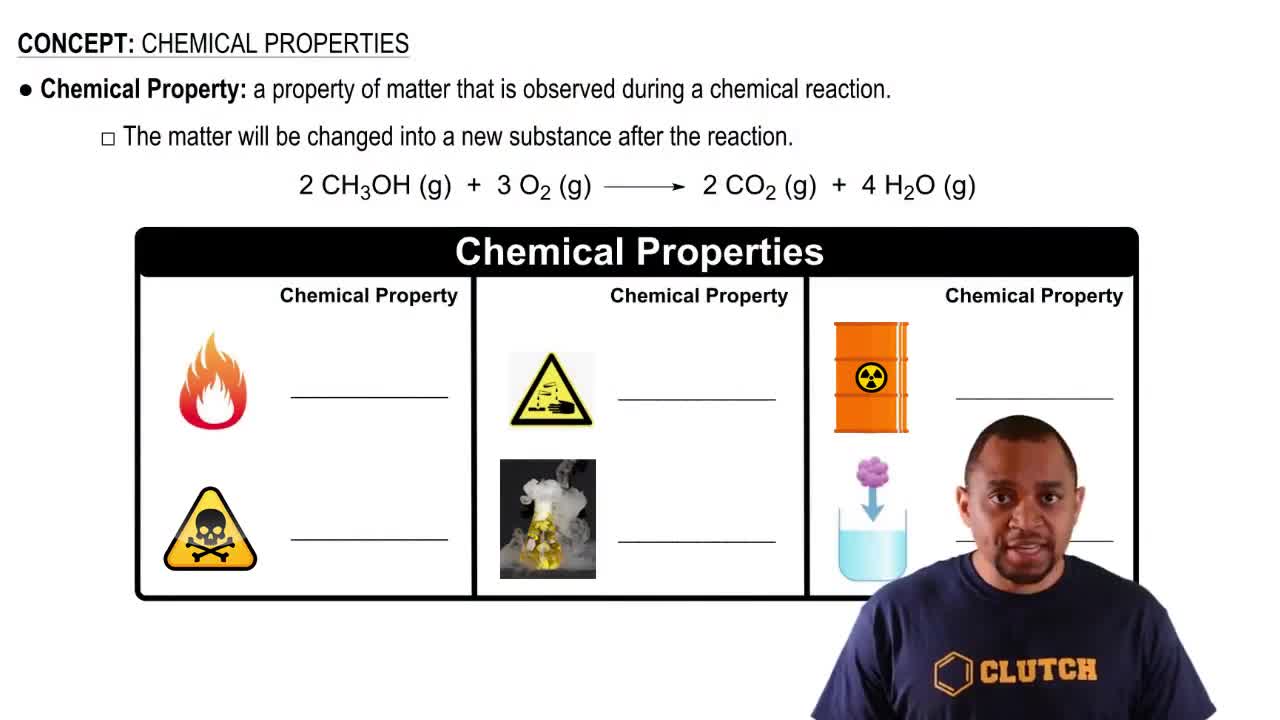Here are the essential concepts you must grasp in order to answer the question correctly.
Oxidation Numbers
Oxidation numbers are a way to keep track of electrons in chemical compounds. They indicate the degree of oxidation of an atom in a molecule, helping to identify how many electrons an atom has gained, lost, or shared. The rules for assigning oxidation numbers include that the oxidation number of an element in its elemental form is zero, and for monoatomic ions, it equals the charge of the ion.
Recommended video:
Rules for Assigning Oxidation Numbers
There are specific rules for assigning oxidation numbers, such as: hydrogen is usually +1, oxygen is typically -2, and the sum of oxidation numbers in a neutral compound must equal zero. In compounds with multiple elements, the more electronegative element usually has a negative oxidation number. Understanding these rules is essential for accurately determining oxidation states in complex molecules.
Recommended video:
Chemical Structure of COCl
The chemical structure of COCl involves a carbon atom bonded to an oxygen atom and a chlorine atom. In this compound, carbon typically has a +2 oxidation state, oxygen is -2, and chlorine is usually -1. Analyzing the structure helps in applying the rules of oxidation numbers effectively, ensuring that the total charge balances according to the compound's neutrality.
Recommended video:



